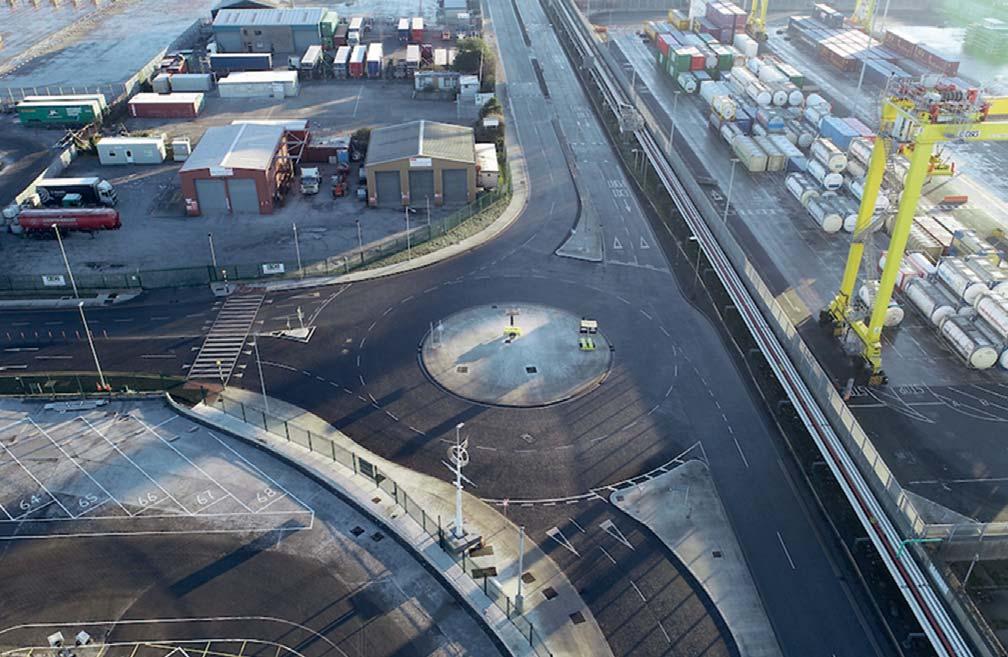
3 minute read
Paving the Road to Success
Dublin Port Company is engaged in a three-year multi-million upgrade of the road system within the North Port estate.
Work on Dublin Port Company’s €27 million Internal Roads Project will be completed in 2021, the culmination of a three-year capital project which involves the creation and upgrading of nearly four kilometres of road within the Port area.
“The driver of the project was to significantly improve the existing road network within the Port so as to provide the capacity to deliver Masterplan 2040 and the major predicted increases in cargo traffic,” explains Brendan Considine, Capital Programme Director, Dublin Port Company.
The project involves:
•Upgrading and rebuild of large elements of the road network that had suffered deterioration due to very heavy volumes of HGVs.
•Re-design and rebuild of major junctions so as to increase handling capacity and so minimise traffic bottlenecks. This includes three new roundabouts. • Creation of a major new road artery, plus connecting roads, on the north side of the Port along the Tolka
Estuary. This will provide a more direct route from the
Dublin Port Tunnel to the Ro-Ro terminals at the east of the Port, and will relieve pressure on Tolka Quay
Road, which currently serves this area.
•Provision of a six-lane traffic stacking area at the east of the Port, upstream of a new combined series of check-in booths for all outbound Irish Ferries and
Stena Line traffic.
•A Port-wide signage project involving 50 new or replacement signs.
•Introduction of improved pedestrian and cycle facilities, as well as Belisha beacon crossings.
•Diversion or relaying of major utility services routes, including one of the main underground ESB high voltage lines which serves the north of the City.

Live road network
“Perhaps the most challenging aspect of the project has been delivering these substantial improvements on what is a heavily trafficked live road network”, says Brendan. “An additional complication was Brexit and the potential of new border control checks to create queues and disruption in the Port road network. Extensive traffic modelling exercises were undertaken by our roads consultant, Roughan & O’Donovan, to show impacts and projected traffic patterns. This led to modification of the Internal Roads Project ahead of the various Brexit deadlines. Changes included the creation of a new 200-metre relief road to relieve pressure on the main roundabout junction in the Port and also to provide access to one of the new State Services Yards.”

Improving the pedestrian and cycle network
The Internal Roads Project also includes improvements to the pedestrian and cycle network within the Port estate. “We are improving pedestrian and cycle facilities within the Port, both as part of our Roads Project, and also through a Pedestrian and Cycle Network Improvement Project which will commence in 2021,” notes Brendan. “This is in addition to the Tolka Estuary Greenway, which commenced construction in late 2020, and the Liffey-Tolka pedestrian & cycle project, which will be submitted for planning approval during 2021. Taken together, these projects will mark a sea-change in pedestrian and cycle access within and around the Port. “The Internal Roads Project is a key part of the landside changes that are happening in parallel with marine-side investment in new and improved berthage in the North Port,” Brendan concludes. “On completion in 2021, the project will have delivered the core improvements to the road network that are crucial to handling increasing cargo volumes.”








